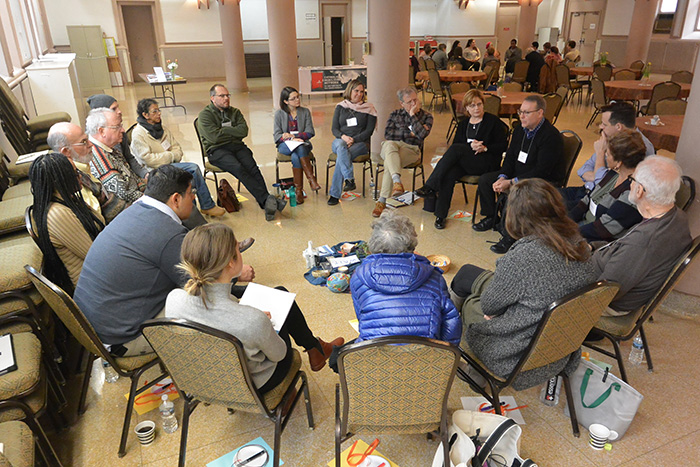

Frequently Asked Questions
How is restorative justice different from the usual way justice is determined?
Historically, those who are most impacted by crime have been left out of the justice process. Often, victims have been relegated to the sidelines while others in the justice system have made decisions that affected their lives and well being in very real ways. Restorative justice identifies victims as key stakeholders in the justice process and ensures that they are informed, involved and have opportunities to directly participate.
Does restorative justice really work?
Most definitely. Its success has been seen around the globe and the increase in the use of such restorative measures as mediation in civil, family, labor and other conflict situations is a testimony of its effectiveness. Results, to date, indicate that victims who have participated in a restorative justice program experienced a far higher rate of satisfaction than they had previously gained from the mainstream justice system. Often, such an experience can be the key to healing and being able to achieve closure. Offenders are often inspired to make whatever steps are necessary to change their lives in positive ways to make amends. This helps all to build community peace.
What are some examples of restorative justice?
Victim offender dialogue, community service, citizen circles and victim awareness/impact classes are just a few examples of restorative practices taking place in prisons, adult parole offices and local communities.
Is there legislation that supports restorative justice?
Restorative justice is the newest emerging policy theme and is gaining wide support. This trend in policy attempts to change our view of crime. In our current retributive system, a criminal act is gener- ally distinguished as an offense committed by an offender against the state.
What are restorative practices?
The term Restorative Practices emerged as an umbrella term to refer to all the various applications of the indigenous-inspired ways of addressing social issues that are based on a set of principles and values. Some of the restorative practices are: community group conferencing, family group conferencing, community accountability boards, victim offender dialogue, reparative boards, restorative mediation, peacemaking circles, restorative circles, circles of accountability and support, etc.
How is restorative justice being applied in other fields?
Restorative principles and processes are being applied in a variety of ways, and new restorative models are being created to address the needs of those systems. For example, Social Service agencies are using the restorative methodology in child welfare cases and calling it Family Group Decision Making. Typically these approaches bring together those parties most directly involved and their support people into a circle process to determine: 1) what harm was done to whom, 2) what needs to be done to repair the harm, and 3) who's responsible for that repair. However, the focus of the circle varies to meet differing needs; for example, in Family Group Decision Making social workers facilitate a group made up of immediate and extended family members to assist the family to determine what placement will best serve the child's wellbeing. Most often determinations are made by consensus agreement among the participating parties as they sit in a circle and engage in a facilitated talking process. Not all circles, however, are based in a criminal incident or a rule violation. Some school communities are embracing this approach and calling it Restorative Practices in Schools or Restorative Discipline. The value for relationship is a restorative principle and circle processes used in schools develop connections among the members of the school community. In these circles, the focus is not on harm and repair but on getting to know each other and fostering a culture of support for mutual success.
